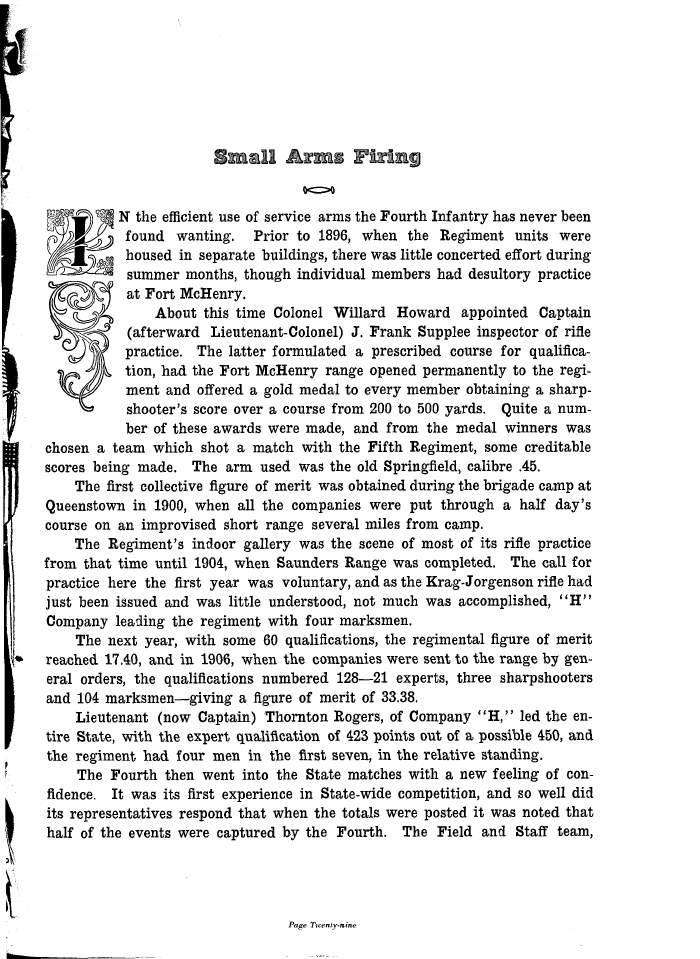 |
||||
 |
||||
| Small Arms Firing i N the efficient use of service arms the Fourth Infantry has never been found wanting. Prior to 1896, when the Regiment units were housed in separate buildings, there was little concerted effort during summer months, though individual members had desultory practice at Fort McHenry. About this time Colonel Willard Howard appointed Captain (afterward Lieutenant-Colonel) J. Frank Supplee inspector of rifle practice. The latter formulated a prescribed course for qualification, had the Fort McHenry range opened permanently to the regiment and offered a gold medal to every member obtaining a sharpshooter's score over a course from 200 to 500 yards. Quite a number of these awards were made, and from the medal winners was chosen a team which shot a match with the Fifth Regiment, some creditable scores being made. The arm used was the old Springfield, calibre .45. The first collective figure of merit was obtained during the brigade camp at Queenstown in 1900, when all the companies were put through a half day's course on an improvised short range several miles from camp. The Regiment's indoor gallery was the scene of most of its rifle practice from that time until 1904, when Saunders Range was completed. The call for practice here the first year was voluntary, and as the Krag-Jorgenson rifle had just been issued and was little understood, not much was accomplished, "H" Company leading the regiment with four marksmen. The next year, with some 60 qualifications, the regimental figure of merit reached 17.40, and in 1906, when the companies were sent to the range by general orders, the qualifications numbered 128—21 experts, three sharpshooters and 104 marksmen—giving a figure of merit of 33.38. Lieutenant (now Captain) Thornton Rogers, of Company "H," led the entire State, with the expert qualification of 423 points out of a possible 450, and the regiment had four men in the first seven, in the relative standing. The Fourth then went into the State matches with a new feeling of confidence. It was its first experience in State-wide competition, and so well did its representatives respond that when the totals were posted it was noted that half of the events were captured by the Fourth. The Field and Staff team, Page Twenty-nine |